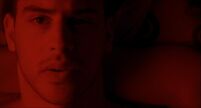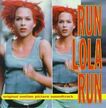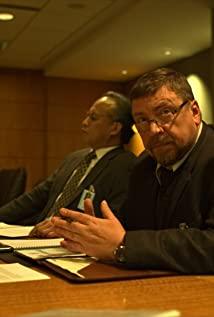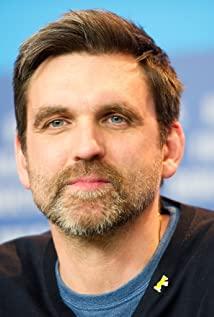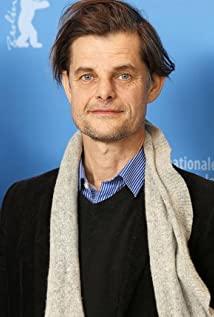At the beginning of the film, Lola and Manny talk on the phone, taking a montage of upside down. Show the current state of the story first, that is, Lola's missed appointment, and Manny calls her. Then go back and introduce the whole story of the call, which is the process of Manny losing the money and Lola's losing the car. Color reality and black and white memories are intertwined and expressed, and although the sequence of events is disrupted, it still clearly and vividly explains the beginning of the story.
When Lola hung up, footage of dominoes falling one after another appeared on the TV in her room. This kind of metaphorical montage combines great generalization and extremely concise expression, implicitly and vividly implying that the next storyline of the audience is like these falling dominoes, which are linked together.
Then, Lola looked for the borrower in her mind. An animated character opened the door of memory, and Lola's body began to rotate. During the rotation, the photos of Lola's relatives and friends were constantly switched. The speed of the photo switching changed from fast to slow, and the characters on the photo changed from confusion to clarity. This is the director's psychological montage method, which vividly expresses Lola's inner thoughts, flashes and the process of Lola's emotions from confusion to clarity. The photo was finally fixed on the father. The father's shaking of the head also hints at the difficulty of Lola's borrowing process in a metaphorical montage.
The development time of the three paragraphs with different results in the film is also the time specified by Manny to Lola in the story, which is twenty minutes. In those twenty minutes, each time Lola runs, the plot is different, Lola, Manny, the woman with the stroller, Uncle Mayer, the father, the guard, the bank girl, the man who stole the bicycle, the homeless, all The fate of the characters has changed to varying degrees, and only Lola's mother remains unchanged. Through this contrast montage, the director creates a strong conflict, expressing his spirit of exploring the uncertainties of life. We can find that the contrast montage is an outer frame of the film "Lola Run".
For the fate of some indirectly related characters, the director did not perform a complete narrative performance, but stitched together several photos to form a story by means of photo montage to express the fate of these characters. Although it is a minimalist expression, it still shows a kind of artistic charm similar to "missing a little bit, a thousand miles" because it is under a big frame like a contrast montage.
For the narration of the main characters, the director adopted a variety of narrative montage techniques to make the whole film clear and logically coherent when narrating the main content. It is precisely because of the use of narrative montage that "Lola Run" expresses the main plot of the entire film more clearly and easily.
First of all, in the narrative of individual characters, the film presents a continuous montage method that is natural and smooth, simple and smooth. Along the plot clues of a certain character, according to the logical development sequence of events, rhythmically continuous narrative.
In the process of Lola's running, Lola, Manny, and Lola's father, these three clues are developed and juxtaposed at the same time, and the separate narratives are unified under such a big framework of a complete Lola borrowing money. This use of parallel montages at the same time and in different places focuses the representation of the fate of the three main characters, greatly speeding up the pace of the film and effectively showing the tension in saving Manny.
In addition, the method of cross montage in the film is also frequently used, mainly in the interaction of Lola, Manny, and the clock. Lola's non-stop running is the main thread of the film, which is frequently alternately spliced with Manny's actions during the twenty minutes waiting for Lola and the running of the clock in the square. And in the three runs, the development of the main clue Lola often has a direct impact on the development of this clue of Manny. Arguably, these three threads are interdependent, but still converge in the end. This way of editing can easily lead to suspense and create a tense atmosphere that can effectively mobilize the audience's emotions.
Based on the above, we can find that "Lola Run" takes performance montage as the big frame, and constructs a world full of uncertainty and exploration. In the process of expression, the director used a variety of narrative montages to explain the plot and show the events, giving the audience a different world of Lola in the eyes of the director.
View more about Run Lola Run reviews



